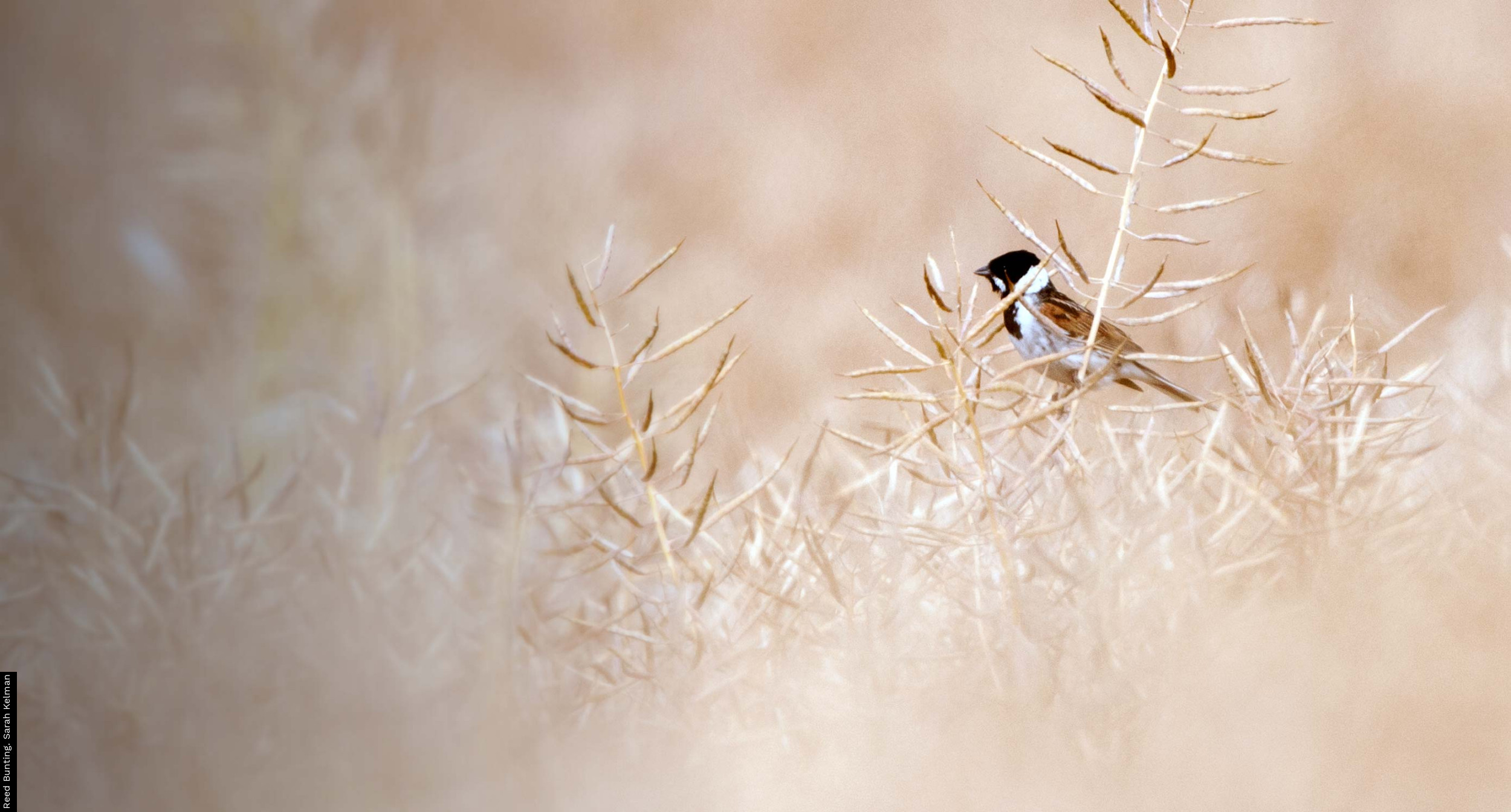Population changes of species for which our best long-term trend estimate from CBC/BBS (usually over 50 years) or from WBS/WBBS (a maximum of 42 years) shows an increase of more than 50% are shown in Table C1. There are 30 species listed, the same as in BirdTrends 2018; however the increase for Oystercatcher is now just below the cut-off and it has been replaced in the table by Coal Tit which is now just above the cut-off. Twenty of the species have more than doubled their population size over the periods in which they have been monitored (24–50 years).
Table C1 Long-term population increases of greater than 50% from CBC/BBS (1967-2017) or WBS/WBBS (1975-2017), using the best survey for each species |
| Species | Period (yrs) |
Source | Change (%) |
Lower limit |
Upper limit |
Alert | Comment |
|---|---|---|---|---|---|---|---|
| Buzzard | 50 | CBC/BBS England | 850 | 540 | 3013 | ||
| Greylag Goose | 24 | WBS/WBBS waterways | 461 | 187 | 1754 | ||
| Great Spotted Woodpecker | 50 | CBC/BBS UK | 387 | 275 | 646 | ||
| Shelduck | 31 | CBC to 1999 | 300 | 94 | 787 | Small sample | |
| Collared Dove | 45 | CBC/BBS UK | 299 | 154 | 475 | ||
| Blackcap | 50 | CBC/BBS UK | 297 | 231 | 393 | ||
| Mute Swan | 50 | CBC/BBS UK | 270 | 71 | 845 | ||
| Nuthatch | 50 | CBC/BBS UK | 268 | 185 | 441 | ||
| Stock Dove | 50 | CBC/BBS England | 237 | 135 | 413 | ||
| Green Woodpecker | 50 | CBC/BBS England | 162 | 87 | 263 | ||
| Woodpigeon | 50 | CBC/BBS UK | 162 | 33 | 442 | ||
| Mallard | 50 | CBC/BBS UK | 154 | 93 | 220 | ||
| Goosander | 36 | WBS/WBBS waterways | 148 | 53 | 322 | ||
| Coot | 50 | CBC/BBS UK | 142 | 43 | 427 | ||
| Carrion Crow | 50 | CBC/BBS England | 137 | 89 | 178 | ||
| Canada Goose | 36 | WBS/WBBS waterways | 137 | 37 | 511 | ||
| Goldfinch | 50 | CBC/BBS England | 131 | 70 | 198 | ||
| Jackdaw | 50 | CBC/BBS UK | 130 | 56 | 222 | ||
| Wren | 50 | CBC/BBS UK | 117 | 88 | 145 | ||
| Chiffchaff | 50 | CBC/BBS UK | 110 | 73 | 170 | ||
| Reed Warbler | 50 | CBC/BBS UK | 99 | 31 | 334 | ||
| Magpie | 50 | CBC/BBS UK | 98 | 62 | 152 | ||
| Long-tailed Tit | 50 | CBC/BBS England | 96 | 36 | 177 | ||
| Pheasant | 50 | CBC/BBS England | 94 | 52 | 166 | ||
| Great Tit | 50 | CBC/BBS UK | 90 | 65 | 115 | ||
| Sparrowhawk | 42 | CBC/BBS England | 87 | 9 | 229 | ||
| Pied Wagtail | 50 | CBC/BBS UK | 57 | 17 | 124 | ||
| Goldcrest | 50 | CBC/BBS England | 54 | -12 | 242 | ||
| Robin | 50 | CBC/BBS UK | 52 | 39 | 69 | ||
| Coal Tit | 50 | CBC/BBS UK | 50 | -3 | 147 |
Table C1 is led by Buzzard, by a wide margin, but it should be noted that seven of the fastest-increasing species in this report are actually not included here, because their monitoring data cover too short a period. The UK's non-native population of Ring-necked Parakeets is estimated to have risen by 1710% (more than a 18-fold increase) over the 22 years 1995–2017. Arguably, however, this is more a conservation problem than a success! Mandarin Duck (+54% over 2007-17) is another fast-increasing non-native species. Undoubted success stories are the growth during 1995–2017, estimated through BBS, of Barn Owl (+289%), Gadwall (+213%) and the re-introduced Red Kite (+1624%). Little Egret has increased by more than 20-fold during 1995–2017. Though the trajectory has been moderated by recent cold-weather-related setbacks, attention should also be drawn to the rapid rise of Cetti's Warbler, a recently established native species, which CES now estimates to have increased by 988% during 1992–2017.
Four groups stand out among the increasing species: corvids – especially Carrion Crow, Magpie and Jackdaw; doves – Collared Dove, Stock Dove and Woodpigeon; woodpeckers and other smaller species of woodland and gardens; and some waterbirds. Corvids appear to have benefited from changed gamebird management practices in recent years, and the larger doves from the increased acreage of brassica crops (particularly oilseed rape).
The majority of the third group are species primarily of woodland that are also common in gardens in some areas: Great Spotted Woodpecker, Green Woodpecker, Nuthatch, Blackcap, Wren, Great Tit, Coal Tit, Long-tailed Tit, Goldcrest and Robin. The reasons for these increases are presently unclear but may, in many cases, relate to improved feeding opportunities in gardens. Pied Wagtail has increased in numbers by 57% on CBC/BBS plots over 50 years, but declined by 66% on WBS/WBBS plots over the past 42 years, although the CBC/BBS index is likely to be most representative of the UK population as a whole. Reed Warbler, also an insectivore, has been expanding its range northwards and westwards and might be benefiting from climate change. Declines on CES plots suggest the benefits might not be universal, with the habitat quality in 'core' sites possibly decreasing, while warming climates facilitate the colonisation of new sites.
A number of species associated with freshwater habitats are becoming more abundant, although differences between their ecological requirements make it unlikely that there is a single causal factor common to all. For Mallard, the CBC/BBS increase was matched by a WBS/WBBS increase of 169% over 42 years. The long-term increases recorded for Mute Swan on both CBC/BBS and WBS/WBBS plots are likely to be the result, at least in part, of banning the use of lead weights by anglers, which took effect in 1986. Greylag Goose, Shelduck, Canada Goose, Coot and Goosander are other wildfowl among this report's increasing species.
Two widespread raptors have shown remarkable recoveries from low population levels after the banning of certain poisonous farmland pesticides in the early 1960s, assisted by lower levels of illegal predator control. Buzzards increased in England by 850% between 1967 and 2017, with an increase of 46% over the last ten years alone. Sparrowhawks, too scarce for CBC to monitor until the mid 1970s, show a 87% increase over the 42-year period from 1975 to 2017. However, their recovery appears to have been completed earlier than Buzzard's, and the population is now in moderate decline (for unknown reasons), prompting a lower level alert to be raised over the 25-year period (see Latest long-term alerts).
While Pheasant holds a place in this table, its increase in census data has been driven largely by increasing, but poorly quantified, scale of releases of artificially reared poults for shooting. Corvids, and other generalist predators, may also have benefited, exploiting both through the food provided for poults and the high mortality of poults, resulting in an abundant level of carcasses.
This report should be cited as: Woodward, I.D., Massimino, D., Hammond, M.J., Harris, S.J., Leech, D.I., Noble, D.G., Walker, R.H., Barimore, C., Dadam, D., Eglington, S.M., Marchant, J.H., Sullivan, M.J.P., Baillie, S.R. & Robinson, R.A. (2019) BirdTrends 2019: trends in numbers, breeding success and survival for UK breeding birds. BTO Research Report 722. BTO, Thetford. www.bto.org/birdtrends





Share this page